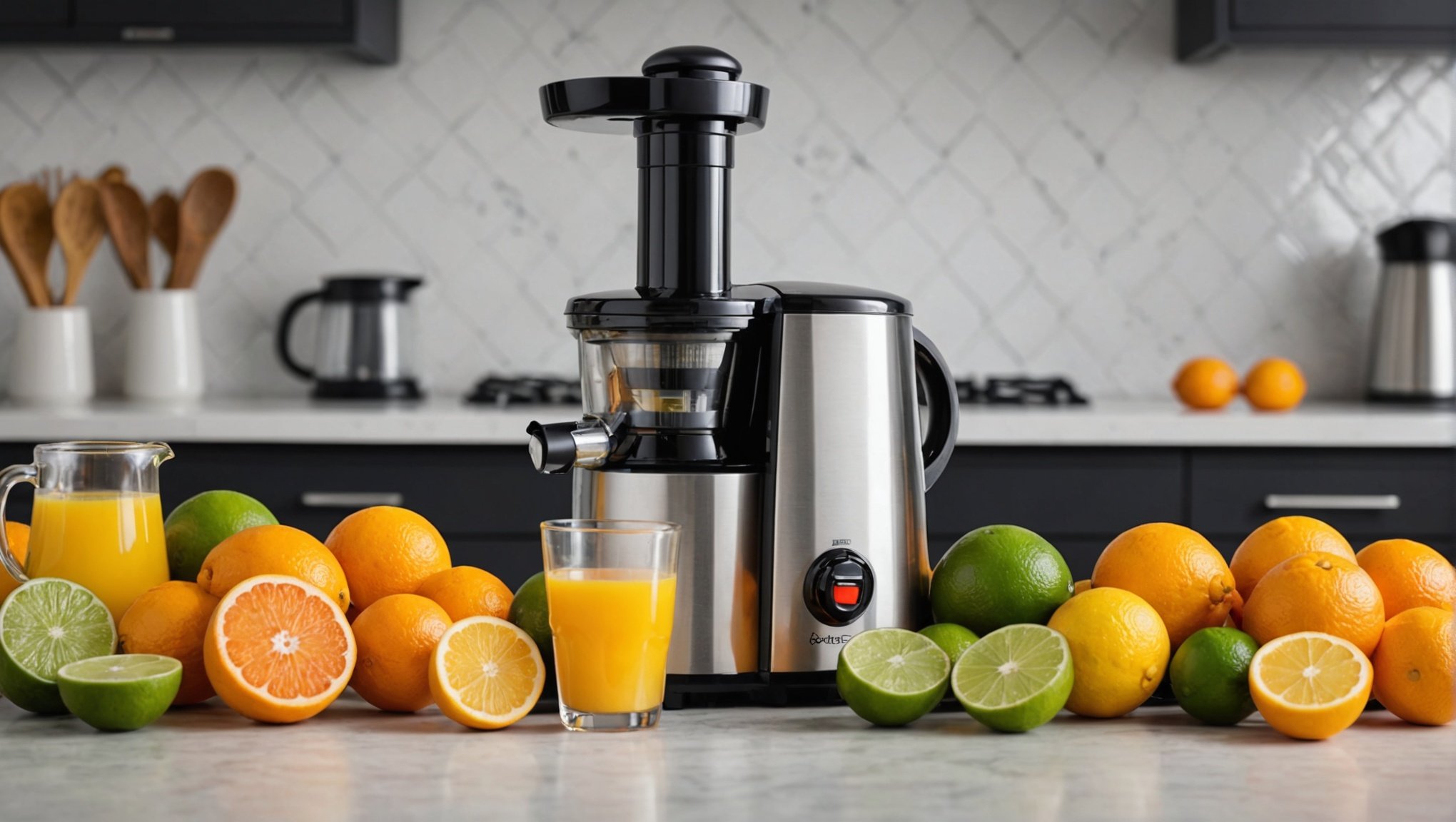Unlocking the perfect citrus juicer can elevate your kitchen experience, transforming fresh fruits into vibrant beverages. With various models available, choosing the right one can feel overwhelming. This guide provides expert insights to help you understand essential features, from extraction methods to ease of use. Say goodbye to frustrating manual efforts and enjoy maximum juice extraction with ease. Let’s explore how to find your ideal juicer and boost your morning routine!
Understanding Citrus Juicers
Citrus juicers come in a variety of types, each with unique mechanisms designed to extract juice efficiently. The primary distinction lies between manual and electric juicers. Manual juicers, often simpler in design, rely on hand pressure to extract juice. They are ideal for those who enjoy a more hands-on approach and have smaller quantities of citrus to process.
In parallel : Transform Your Diet: The Benefits of a Dedicated Yogurt Maker for Calorie-Conscious Living
Electric juicers, on the other hand, offer convenience and speed, making them suitable for larger batches. They are further divided into two main mechanisms: centrifugal and masticating. Centrifugal juicers work by rapidly spinning fruit against a blade, using centrifugal force to separate juice from pulp. This method is quick but can introduce more air into the juice, potentially reducing its shelf life.
Masticating juicers, also known as cold press juicers, use a slow, grinding action to extract juice. This technique preserves more nutrients and enzymes, resulting in a healthier and longer-lasting product. Each juicer type offers distinct benefits, catering to different preferences and needs. Whether prioritising speed, nutrient retention, or ease of use, understanding these mechanisms helps in choosing the right juicer for optimal juice extraction.
Also to discover : Transform Your Diet: The Benefits of a Dedicated Yogurt Maker for Calorie-Conscious Living
Key Features to Consider
When selecting a citrus juicer, understanding the juicer features that impact usability and design is crucial. One of the primary considerations is ease of use and cleaning. A juicer that is easy to assemble and disassemble can save you time and frustration. Look for models with dishwasher-safe parts to simplify maintenance.
Size and capacity are also important, especially for home kitchens with limited counter space. Compact designs are ideal for smaller kitchens, while larger models with higher capacity are suitable for families or frequent juice enthusiasts. Assessing your kitchen space and how much juice you typically consume will guide your choice.
Features that enhance juice quality and extraction efficiency are worth considering. Some juicers come with adjustable pulp control, allowing you to customise the texture of your juice. Anti-drip spouts prevent messes, while reverse action motors can help maximise juice yield.
Ultimately, investing in a juicer that aligns with your specific needs and preferences will ensure a satisfying juicing experience. Prioritising these key features will enhance both the quality of your juice and the overall usability of your appliance.
Tips for Optimal Juice Extraction
Achieving the best results in juice extraction starts with proper prepping of citrus fruits. Begin by rolling citrus fruits on a hard surface with your palm to soften them; this simple technique helps release more juice. For maximum yield, ensure fruits are at room temperature before juicing. This allows the juice to flow more freely compared to chilled fruits.
When it comes to juicing techniques, consider cutting the fruit in halves or quarters, depending on the size, to fit your juicer. For manual juicers, apply steady pressure and rotate the fruit to extract every drop. With electric models, ensure the fruit is securely positioned to avoid unnecessary pulp waste.
Avoid common mistakes such as juicing too quickly or applying excessive force, which can lead to bitter flavours from the pith. Additionally, overfilling the juicer can reduce efficiency and result in less juice. Always follow the juicer’s capacity guidelines.
By mastering these juicing techniques and avoiding pitfalls, you can enhance your juice’s flavour and nutritional value. Whether using a manual or electric juicer, these juice extraction tips ensure a refreshing and satisfying experience.
Product Recommendations and User Reviews
Exploring the best citrus juicers available can simplify your decision-making process. Among the top-rated models, the Breville Citrus Press and the Black+Decker Citrus Juicer stand out for their efficiency and user-friendly design. The Breville model is praised for its robust build and powerful motor, making it ideal for frequent use. On the other hand, the Black+Decker option is noted for its affordability and compact size, perfect for occasional juicing.
When it comes to product comparisons, the Breville Citrus Press offers advanced features like adjustable pulp control and a drip-stop spout. It is priced higher, reflecting its premium quality and durability. Conversely, the Black+Decker model, while simpler, provides excellent value with its easy-to-clean parts and straightforward operation.
Consumer feedback highlights the Breville’s efficiency in extracting maximum juice with minimal effort, though some users mention its higher cost. The Black+Decker receives positive reviews for its practicality and budget-friendly nature, though it may not be as durable for heavy-duty use.
These insights into product comparisons and consumer feedback can guide you in selecting a citrus juicer that meets your needs, whether prioritising performance or budget.
Maintenance and Care for Citrus Juicers
Proper juicer maintenance is essential to ensure its longevity and optimal performance. Regular cleaning is the cornerstone of maintaining your citrus juicer. After each use, disassemble the juicer and rinse all removable parts under warm water to prevent build-up of pulp and juice residue. Use a soft brush to clean hard-to-reach areas, ensuring no debris is left behind.
For a deep clean, consider soaking parts in a mixture of water and mild dish soap. This method helps remove stubborn stains and odours. Always refer to the manufacturer’s instructions regarding dishwasher safety to avoid damaging components.
To maintain juicer performance over time, inspect parts regularly for wear and tear. Replace any worn-out gaskets or blades to keep the juicer functioning efficiently. Lubricating moving parts with food-grade oil can also enhance performance and reduce friction.
Recognising the signs of a juicer needing replacement is crucial. Diminished juice yield, unusual noises, or difficulty in operation indicate it might be time for a new unit. Investing in good maintenance practices not only extends the lifespan of your juicer but also ensures a consistently satisfying juicing experience.






